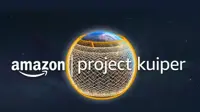Voyager maps could lead hostile aliens to earth, fear experts
16 Aug 2017
When Frank Drake, an American astronomer, worked with US space agency NASA to design maps, which were placed inside probes, there was little fear that they could backfire. Now, however, some experts seriously worry that it might have been a mistake, as such maps could lead hostile aliens to earth.
 The maps, if intercepted and decoded by extraterrestrials, will reveal our location and the date probes like the Voyager were launched.
The maps, if intercepted and decoded by extraterrestrials, will reveal our location and the date probes like the Voyager were launched.
Dr Drake said, ''We needed to put something on the Voyager that said where it came from, and how long it was travelling.''
The Voyager program is a continuing project that employs two robotic probes, Voyager One and Voyager Two, to study the outer solar system.
The Voyager 1 spacecraft is one of the universe's only unproblematic favourites. For over 39 years, it's been cruising along in space, flying by Saturn and the Kuiper Belt, doing nothing but beaming back beautiful photos and scientific research.
But now, there are new worries as the probes speed into deep space containing a map that aliens could unlock and, theoretically, follow back to earth.
York University's Kathryn Denning, an anthropologist who studies the ethics of sending messages to extraterrestrials, said, ''Back when Drake did the pulsar map, and Carl Sagan and the whole team did the Voyager record, there hadn't been very much debate over the pros and cons of contact with extra-terrestrial intelligence.
''Now, however, as you know, there is a major debate among scientists and a variety of stakeholders about the wisdom of doing anything other than listening.''
The records contain sounds from nature, such as volcanoes and thunder, as well as noises linked with humanity including a train, a horse and cart, and even a kiss between a mother and child.
Dr Drake said, ''In those days, all the people I dealt with were optimists, and they thought the ETs would be friendly. Nobody thought, even for a few seconds, about whether this might be a dangerous thing to do.''
Denning urged everyone to act thoughtfully and consider the pros and cons of intentionally hailing aliens.
She added, ''We are all on this earth together.''
Pulsars are husks of expired stars and live for an incredibly long period of time. The aim of the map is to use each unique pulsar as lighthouses, marking the way to earth.
Dr Drake continued, ''There was a magic about pulsars … no other things in the sky had such labels on them.
''Each one had its own distinct pulsing frequency, so it could be identified by anybody, including other creatures after a long period of time and far, far away.''
Despite the potential dangers the interstellar maps pose, Dr Drake said that the chances of aliens picking up the messages are ''very small''.
He added, ''The thing is going something like 10 km per second, at which speed it takes - for the typical separation of stars - about half a million years to go from one star to another.''
Renowned physicist Professor Stephen Hawking suggested last year that meeting beings from another planet could lead to humans being wiped out.
He warned that ''meeting an advanced civilisation could be like Native Americans encountering Columbus''.
"That didn't turn out so well,'' he said. ''Aliens could be rapacious marauders roaming the cosmos in search of resources to plunder, and planets to conquer and colonise.''









.webp)














